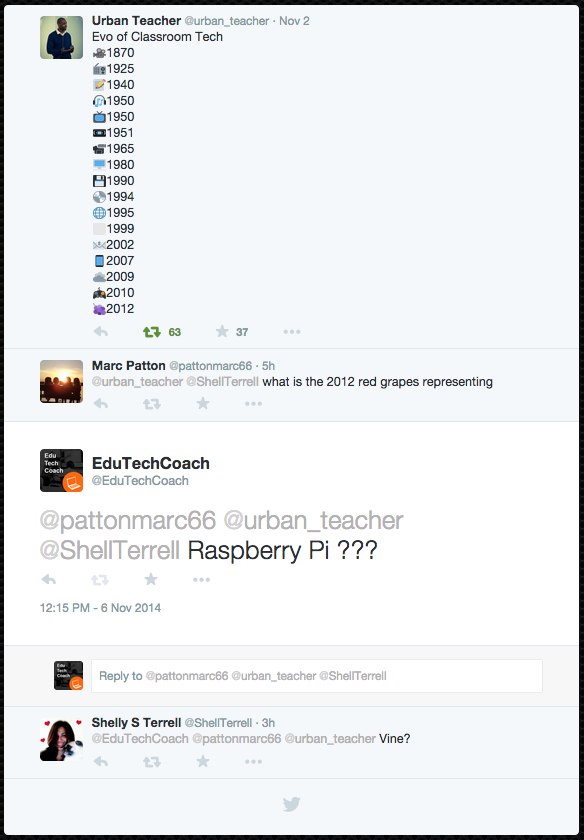Summary of HashTags
Hashtags used: #edtech, #edchat, #flippedlearning, #flippedclassroom, #cybersafety, #edtechtips
Of these hashtags the most popular, based on data provided by social analytics website Topsy, was #edchat closely followed by #edtech, with both tags averaging between 3,000 to 7,000 tweets per day over a 30 day period. Both of these hashtags are fairly general tags for the education and educational technology community on twitter, the content covered can be quite diverse which is why many utilise additional hashtags to differentiate their posts.
The remaining hashtags I employed where less popular, possibly because they are targeted towards more specific or niche topics. To gain maximum ‘impressions’ I would use these tags in conjunction with the more general popular tags above.
My tweets, retweets and responses
Great video by @jonbergmann & @chemicalsams on #flippedlearning common questions & hurdles http://t.co/6dKIjjvmhS #flippedclassroom #edchat
— EduTechCoach (@EduTechCoach) November 5, 2014
This tweet was by far my most successful. According to my tweet analytics, provided by Twitter, this tweet had 266 impressions, 2 retweets, 2 favourites and 8 engagements at a rate of 3%.
This tweet reached a larger audience due to it being favourited by @jonbergmann, one of the users I initially mentioned in the tweet. @jonbergmann has over ten thousand twitter followers in comparison to my 70, so having him favourite my tweet increased my audience exponentially.
https://twitter.com/EduTechCoach/status/529830419093389312
This tweet did not reach a massive audience, only 55 impressions, but it succeeded in bringing a couple of viewers to my main web presence and also to my twitter profile.
Don’t give out your personal information online. “@CyberSafety808: #OnilnePredators are EVERYWHERE!!! http://t.co/5GnIU9NToA” #cybersafety
— EduTechCoach (@EduTechCoach) November 5, 2014
I ‘quote tweeted’ this from my phone. It generated very little impressions, only 19. This could be because I didn’t use the most effective hashtags. In hindsight, I should have also added the letters RT in addition to the original tweeter’s username. It is considered best practice to do this to indicate the work belongs to someone else.
I initially retweeted this tweet from @urban_teacher and then later responded to a reply left by another user. It didn’t generate a whole lot of conversation but my reply did garner a few impressions, 52. Most likely due to including users with strong twitter followings, as I didn’t include any hashtags in my reply.
My thoughts
Overall, I quite enjoyed this exercise. At times I found it quite challenging to think of how best to construct a tweet so that it would reach my desired audience. It also took me a few attempts to get used to the 140 character limit, I often had to omit characters or restructure my tweet so that it made sense and reached my target audience.







